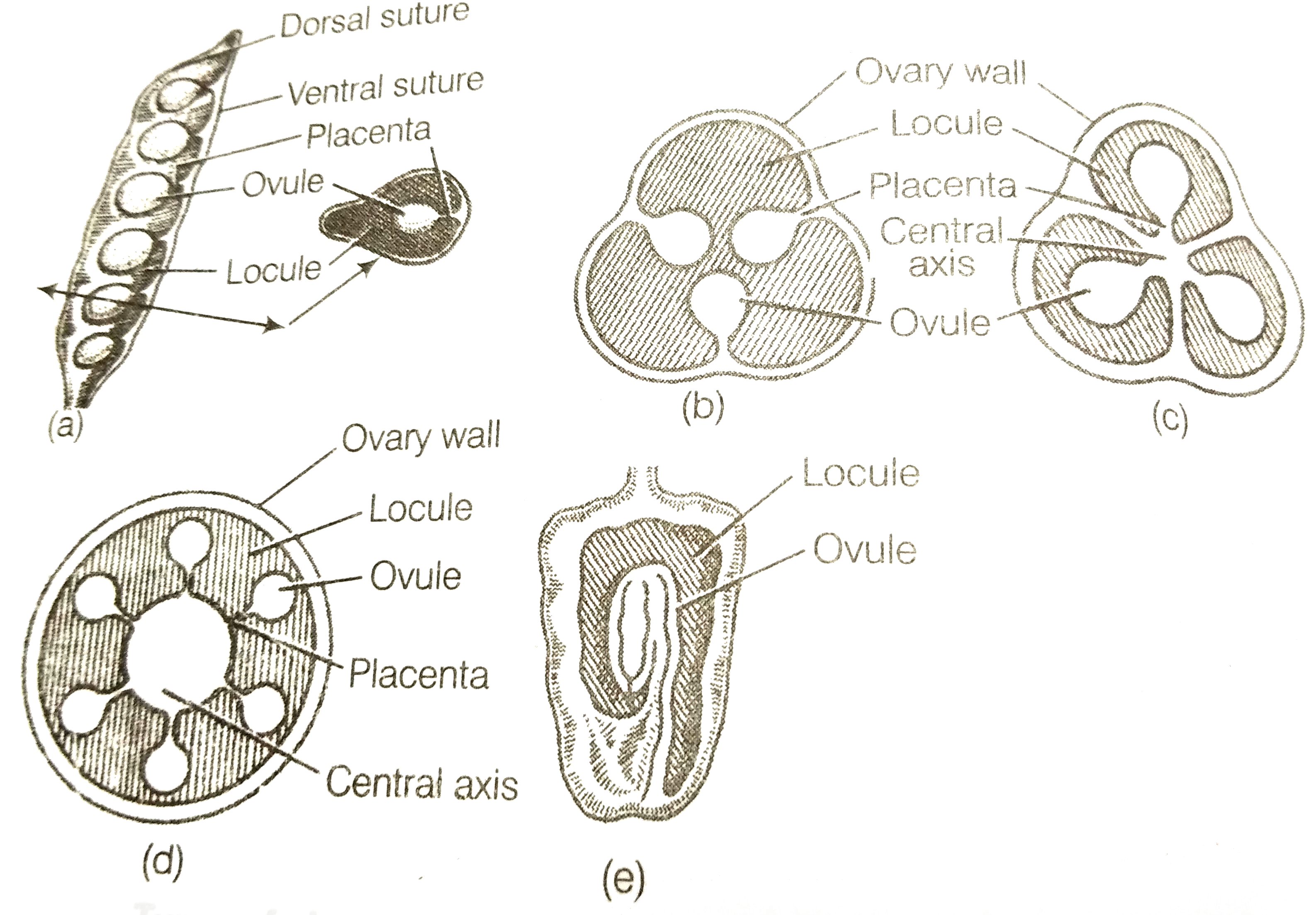The arrangement of ovules within the ovary is known as placentation. What does the term placenta refer to ? Draw various types of placentations in the flower as seen TS and VS
Placenta are soft cushion like tissues with which the ovules are attached to the inner surface of ovary wall
The arrangement of ovules within the ovary is known as placentation. The placentations are of different types i.e., marginal, axile, parietal, basal and free central
Marginal Placentation In this placentation, the plcenta forms a ridge along the ventral suture of the ovary and the ovules and the ovules are borne on this ridge forming two rows, as in pea
Axile Placentation In this placentation, the ovules are borne on central axis and the marginal of placenta grow in word and fuse, thus making a multicular ovary, as in China rose, tomato, etc
Parietal Placentation In this placentation, the ovules develop on the inner wall of the ovary or on peripheral part. Ovary is one chambered but it becomes two chambered due to the fomation of a false septum known as replam, e.g., mustard
Free Central Placentation In this type of placentation, the ovules are present on the central axis of ovary and septa is absent so ovary is unilocular, as in Dianthus and Primose.
Basal Placentation In this placentation, the placenta develops at the base of ovary and a single ovule is attached to it. as in sunflower

Topper's Solved these Questions
Similar Questions
Knowledge Check
- Question 1 - Select One
What type of placentation of seen in sweet pea
AFree centralBMarginalCBasalDAxile - Question 2 - Select One
What type of placentation is seen in Sweet Pea?
AFree centralBMarginalCBasalDAxile - Question 3 - Select One
What is the type of placentation in which ovules are borne on central axis without septa
AParietal, e.g. PrimroseBAxile, e.g. China roseCFree central, e.g. DianthusDMarginal, e.g. Pea
The mode of arrangement of sepals or petals in a floral bud is known as aestivation . Draw the various types of aestivation possible for a typical pentamerous flower.
View SolutionThe ovules develop on the inner wall of the ovary on peripheral part in which type of placentation?
View SolutionFour plants (A, B, C, D) are observed. ‘A’ shows axile placentation of unitegmic ovules within the ovary. 'B' shows basal placentation of unitegmic ovule within the ovary. 'C' has legume fruit with cotyledons as chief edible parts. 'D' has pneumatophores and vivipary type of seed germination. A, B, C and D plants, respectively are
View SolutionIn which type of placentation, the ovules develop on the inner wall of the ovary :-
View SolutionIn a flower of a plant, the number of carpels is equal to number of inner whorl of perianth lobes and cotyledons in the seed of that plant are 1/3 of carpel number. What is the arrangement of ovules on the placenta of the flower of that plant
View Solution

